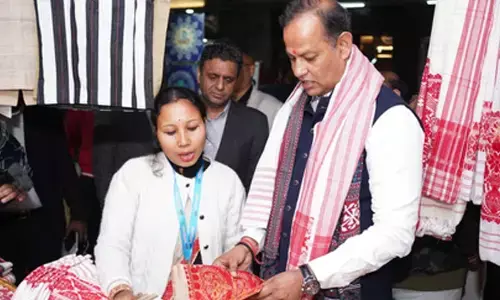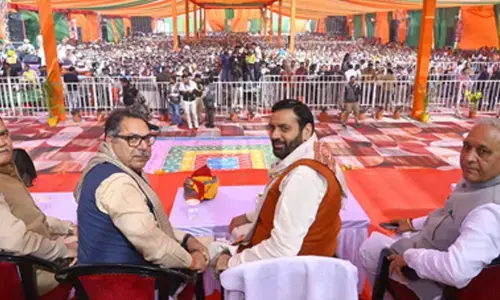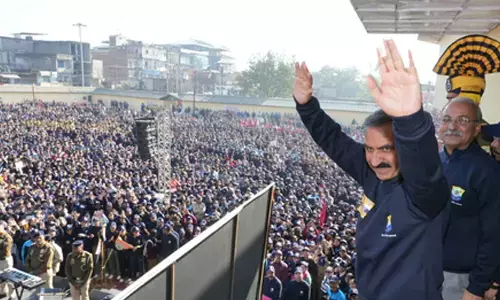Parliamentary impropriety of resolution
Parliamentary impropriety of resolution, AP Legislative Assembly, AP Reorganization Bill 2013. It is counted that Seemandhra has 160 out of 279 members in the Assembly.
It is untruthful and unethical to say that the Andhra Pradesh Legislative Assembly has rejected the AP Reorganization Bill 2013. It is untruthful because the Speaker has announced that the resolution rejecting the Bill has been accepted by voice vote; but none knows exact number of ‘ayes.’ Neither the Speaker of Assembly nor the Chairman of Council can authentically say how many voted for and how many against. In a 294-member Assembly with an effective strength of 279 members, it is assumed that 160 members belonging to Seemandhra voted for the resolution and the rest of members rejected it. It is just an assumption that all Seemandhra leaders were together in rejecting Telangana, while their differences and disunity is an open secret. Thus, the truth of majority support to resolution cannot be established.
It is counted that Seemandhra has 160 out of 279 members in the Assembly. But their real strength is the Chief Minister, who exhibited his disloyalty to his own party, and also, unfortunately, the Speaker of Assembly and the Chairman of Council.
The Speaker and the Chairman, who had a fair record of fairness, had a greater chance of exhibiting their objectivity by facilitating the votes to be counted and recounted on such a crucial issue. They lost that chance. Similarly, the Seemandhra leaders lost the opportunity to hide their unbrotherly attitude towards Telangana, which further consolidated justification for the demand for separation.
Factually speaking, the Speaker declared that 9,072 proposals for amendments/expression of views on the clauses of the Bill were submitted by the members in writing, and the Chairman of Council also declared that 1,157 amendments/expression of views were submitted.
The Speaker also said that these opinions would form part of the official record. If that is so, who rejected what and where? Saying that the Seemandhra legislators crossing their party boundaries voted for the rejection is factually incorrect because most of them spoke, agreeing to discuss the Bill and seek only changes in some of its provisions. The Bill was accepted as a Bill, and the whole House not only agreed to discuss it but also discussed it. However, the Chief Minister took a U-turn and hurriedly forced a resolution in the House.
Those who voted against the Bill (assuming that their number is 160) include most of 86 members who spoke for more than 53 hours ever since the Bill was introduced on December 16, 2013.
If one counts Seemandhra Members among them including CM, it is on record that over and above all Telangana members, they also agreed to discuss the Bill. Then what is the basis of the assumption that the House rejected the Bill?
The very fact of accepting with conditions at the Business Advisory Committee a debate on the Bill in the House, discussing it fully, and utilising the granted time plus extended time reaffirms that the Houses in principle accepted the Bill and expressed their views. Even the Leader of the House Kiran Kumar Reddy accepted the Bill as the basis of discussion. He disagreed with the bifurcation, though; it is again a lie because he accepted it before his leaders and the high command and continued accepting it till he took the U-turn. He spoke for hours about the Bill. He sought extension of time to discuss the Bill, without raising any doubt as to whether it was draft or final Bill etc. He sought another extension. And when it was clear to him that he could not delay it any more, he developed an afterthought to rush a resolution through by raising untenable technical aspects. He knew no further extension would be granted. He knew that factually they went ahead with expression of views, which rightly fulfills a Constitutional requirement in the process of division of State.
Going by technical aspects, the Leader of House should have introduced the resolution, because he proposed it. It should have been followed by discussion before it is put to voting. It was deliberately avoided.
Instead of the Chief Minister, the Speaker introduced it as if it was his resolution. He put it before House, guillotined the discussion, and asked for voting. And without even hearing ‘ayes’ or ‘noes,’ he declared that the resolution was passed.
The Bill that was discussed for 45 days goes without a logical conclusion, whereas a resolution gets approval within seconds without any discussion. More than the constitutional, it is conspiratorial; and more than Parliamentary, it is an un-Parliamentary practice to reject a Bill which was discussed for more than 45 days.















